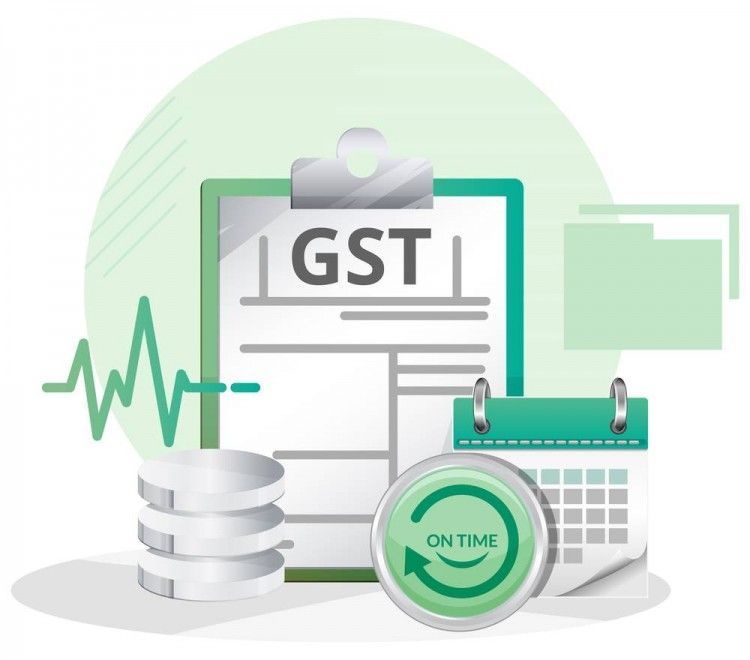The Offline Tool lets users move through the current returns portal prototype and learn and enjoy the features that will be provided under the GST New Return System. By having first-hand experience with the prototype, taxpayers would be able to share recommendations to help the Goods and Services Tax Network cope with potential glitches. Here in this article, we will be learning New GST Returns And Offline Tools with detailed explanation.
To help taxpayers appreciate and experience the difference between existing and prospective return programs, the Goods and Services Tax Network launched the New Return Offline Tool in 2019. This is a web-based, immersive prototype of the New Return Process, allowing taxpayers to navigate through the different sites of the new scheme, giving them a first-hand view into what's in store for 2020. Here's what you need to know about the Current Offline Return Tool in case you want to try it out before the New Return System starts in October 2020.
The New Return Approach would eliminate the need for several forms to be submitted and would include a simplified return process. Fundamentally, the new type was planned to replace GSTR-3B, GSTR-1. Using the Latest Offline Return Tool, taxpayers can use the current return form to understand how it covers areas of all forms of return and eliminates current returns.
At its 37th meeting with the members, the GST Council announced that new regulations would be adopted with regard to the filing of GST returns. In this article, we will talk about the key points that the taxpayer wants to make when it comes to the new GST returns. A description of the key terms and tactics that characterize the most recent GST returns is explained here.
Overview of the New GST Return Rules
At the 37th meeting of the GST Board, it was decided that a revised GST return filing system would be implemented for taxpayers. This system of returns would provide simplified return forms to encourage the reporting of taxpayers participating in the GST. In this new return plan, there will be one significant return of GST RET-1 and two annexes of GST ANX-1 and GST ANX-2, respectively. This audit can be reported on a monthly basis, as opposed to small taxpayers who would prefer to file the same return on a quarterly basis. Small taxpayers are taxpayers with a turnover of up to Rs. 5 crores in the previous financial year.
Significant improvements to the Current GST Return Framework
The following are some of the improvements that have been made to the current GST return system:
- The Harmonized System of Nomenclature (HSN) code will be used to provide details at the reporting point based on turnover) versus another HSN definition.
- (ii) An person shall also receive HSN via his or her GST ANX-2 anywhere the supplier has notified the HSN code.
- (iii) B2B services charged to the reverse cost scheme do not need to be proven by the seller in the GST ANX-1, but the total amount will need to be seen in the GST RET-1.
- Inward components which are liable to the RCM shall be declared to the GST ANX-1 at the GSTIN level by the receiver of the supplies.
- The B2C-L concept has been deleted. The turnover cap for quarterly filers (small taxpayers) would be deemed to be Rs. 5 crores relative to the existing limit of Rs. 1.5 crores.
- The purchaser may log the absence of invoices at the invoice stage i.e. when the supplier has not uploaded the invoice within the T+2 period).
Forms Ought to be filed under the Current GST Return Framework
The primary GST RET-1 return will include a summary of all substances, the input tax credit used and the payment of taxes, along with interest, if any. This return will include two annexed forms, namely GST ANX-1 and GST ANX-2. GST ANX-1 (Appendix of Outward Supplies) is planned to provide information on all outward supplies, inward supplies that are subject to reverse billing, and imports of goods and services that need to be suggested on an invoice basis (except for B2C supplies) on a real-time basis.
GST ANX-2 (Appendix to Inward Supplies) will file main points for all inward supplies. All of these crucial points will be auto-printed from the small print uploaded to the suppliers in their ANX-1 GST. The recipient of the supplies will be willing to take action on these self-made documents, which will be made available to them in real-time.
Fresh GST Offline Return Tool
The Goods and Services Tax Network (GSTN) launched an immersive web-based version of the Offline Tool for the new GST Return System. In this idea demo model, the taxpayer will be able to search several pages. This prototype will also allow taxpayers to explore various features, such as drop-down menus, uploading invoices, uploading transactions for verification of inward supply (system-generated) etc.
A taxpayer will be able to analyse and observe the practical measurements of the simplified GST returns in this prototype. The taxpayer would then share ideas or recommendations with the GSTN. The new return system replaces GSTR-3B and GSTR-1. This uncomplicated prototype will give taxpayers a sense of how the device feels. Stakeholders will also share their comments on the prototype before it goes live.

